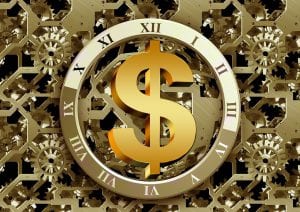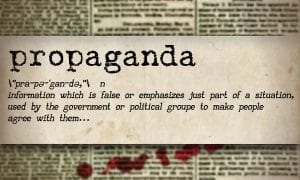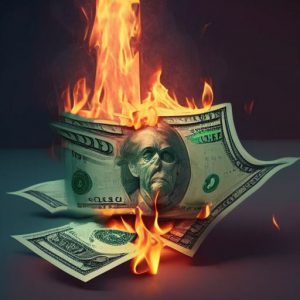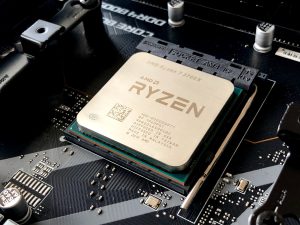What is the US Dollar Backed By? Surprise-Surprise
Update Dec 2021
Among those whom I like or admire, I can find no common denominator, but among those whom I love, I can: all of them make me laugh.H. Auden 1907-1973, Anglo-American Poet.
A birds-eye overview
Many people believe the US dollar is backed by gold, but that’s not entirely true. The full faith and credit of the US government supports the US dollar. This means that the dollar’s value depends on the government’s ability to honour its debts and maintain the economy’s stability.
While some argue that the dollar’s lack of tangible backing makes it vulnerable to inflation and market volatility, others believe that the government’s control over the dollar allows for more excellent stability and flexibility in the global economy. However, gold bugs – those who advocate for a return to the gold standard – argue that fiat currency is worthless and dangerous.
Gold bugs see the US dollar as a symbol of government power and inflationary policies, which they believe erode the value of savings and hard-earned wealth. They argue that gold, on the other hand, has maintained its importance for centuries and serves as a stable store of wealth in times of economic uncertainty.
While the debate over the dollar’s actual value and stability will likely continue, one thing is sure – the US government’s management of the economy will continue to play a crucial role in determining the strength of the dollar and its impact on global markets.
So, whether you’re a gold bug or a dollar bull, it’s essential to stay informed and understand the underlying factors that influence the value of the US currency.
What is the US dollar backed by? Contrarian version
The US dollar is backed by nothing other than empty promises but the masses are not ready for Gold standard and here’s why.
The US dollar, my dear sir or madam, is not backed by anything tangible, only by mere promises of the government. The notion that all paper money will cease to exist and everyone will revert to the gold standard is nothing but a pipe dream, and those who believe it are inaccurate. One must not forget to consider mass psychology, for it is the driving force behind any movement, be it social or economic.
The idea of the gold standard has flaws, as history has proven. Thievery and deceit were still prevalent, with bankers shaving gold coins and engaging in other questionable activities. Gold bugs may ask, “What is the US dollar backed by?” and they may answer, “Nothing.” And while this might be true, it is irrelevant for the masses to think otherwise.
It is not prudent to reject the value of the US dollar, for it is still widely accepted and trusted by the majority. The day may come when the masses lose faith in the US dollar, but it is not anytime soon. So, for now, let us be patient and not succumb to the false allure of the gold standard, for it is not the answer to all our monetary woes.
Why Gold is Not the Answer: A Contrarian Outlook
Carrying around heavy sacks of gold or silver coins is inconvenient and impractical in our modern society. While some gold bugs may argue that the solution to the flaws of fiat currency is to return to the gold standard, they are ignoring the realities of mass psychology and the desire for instant gratification that drives our society. The idea of returning to the gold standard is an outdated pipe dream that ignores the complexities of modern economics.
Instead of looking to gold, we must enact two critical rules to end the current system’s problems. First, banks must be prevented from creating money they do not have. The fractional banking system, which allows banks to create nine new dollars for every dollar of deposit, is outright theft. Second, governments should not be allowed to create any debt. Before approving new projects, governments should have the money to pay for them.
By cutting off the money supply from banks and governments, we can end the inflation and fake boom and bust cycles that plague our economy. Gold is not the answer, and we must not fall prey to the outdated thinking of the past. Instead, we need to enact new rules and regulations that reflect the realities of modern society and economics.
GM’s Ten-Year Struggle:
GM, one of the most iconic car manufacturers in the United States, has struggled to profit from selling cars for over ten years. Its earnings have declined by more than 45%, and its liabilities have grown to nearly double its gross earnings in 2006. The company’s dire situation is worsened by its obligations to pay pensions and medical benefits to its workers.
The company’s financial struggles can be attributed to the interference of the unions and the government. The high costs associated with pensions and benefits for unionized workers have made it impossible for GM to compete with foreign car manufacturers. In addition, government regulations and interventions have created a hostile environment for American manufacturers, driving up costs and decreasing efficiency.
The only way for GM to compete with foreign car makers was to close shop and move overseas or hire non-union workers. However, the company’s pension and medical insurance liabilities are so significant that they need to seek the cheapest labour possible, which is only available in Asia. The future of GM and other U.S. auto manufacturers looks bleak, and the workers who depend on their pensions and medical benefits are likely to be struck. This is a cautionary tale of how unions and government meddling can destroy a once-powerful icon of the U.S. economy. mises.org
How Fiat came to be
In early 1933, to fight severe deflation, Congress and President Roosevelt implemented a series of Acts of Congress and Executive Orders which suspended the gold standard except for foreign exchange, revoked gold as universal legal tender for debts, and banned private ownership of significant amounts of gold coin. These acts included Executive Order 6073, the Emergency Banking Act, Executive Order 6102, Executive Order 6111, the Agricultural Adjustment Act, the 1933 Banking Act, House Joint Resolution 192, and later the Gold Reserve Act.[12] These actions were upheld by the U.S. Supreme Court in the “Gold Clause Cases” in 1935.[14]
For foreign exchange purposes, the set $20.67 per ounce[citation needed] value of the dollar was lifted,[when?] allowing the dollar to float freely in foreign exchange markets with no set weight in gold.[citation needed] This was terminated after one year. Roosevelt attempted first to restabilize falling prices with the Agricultural Adjustment Act; however, this did not prove popular. Instead, the next politically popular option was to devalue the dollar on foreign exchange markets. Under the Gold Reserve Act, the price of gold was fixed at $35 per ounce, making the dollar more attractive for foreign buyers[citation needed] (and making foreign currencies more expensive for those holding dollars). This change led to more conversion of gold into dollars, allowing the U.S. to corner the world gold market effectively.
The suspension of the gold standard was considered temporary by many in markets and in the government at the time, but restoring the standard was considered a low priority to dealing with other issues. Wikipedia
29% don’t know that the US dollar is backed by nothing
It is concerning that a significant portion of the US population is not aware that the US dollar is backed by nothing. People need to understand the nature of fiat currency and the factors that affect its value, such as supply and demand and the stability of the issuing government. Financial literacy is crucial for individuals to make informed decisions about their money and to contribute to a healthy economy. It is encouraging to see studies like this being conducted to shed light on public perceptions and understanding of money and banking. Full story
One never needs their humour as much as when they argue with a fool.
Chinese Proverb Sayings of Chinese Origin
A summarized version of this article
The United States (US) Dollar is no longer backed by gold, as the country abandoned the gold standard in 1971. This means that the value of the US Dollar is not based on the value of a physical commodity. Examples are gold or silver. Instead, the US dollar’s value is derived from the stability of the US economy and the demand for it in the global market.
Some argue that this fiat currency system is unstable, as it is not based on anything tangible. They also say that money printing leads to inflation. Gold bugs submit that the gold standard is a more stable system.
However, others argue that the gold standard is not practical in the modern world because there is simply insufficient gold to support the global economy. Additionally, the gold standard ties the value of money to a finite commodity, which can fluctuate in value. This could lead to economic instability. Ultimately, deciding to use fiat currency or a gold standard is a matter of economic philosophy and debate.
Research
- “Gold Standard” – Investopedia. Available at: https://www.investopedia.com/terms/g/goldstandard.asp
- “What Is Fiat Money?” – The Balance. Available at: https://www.thebalance.com/what-is-fiat-money-3306091
- “How the U.S. Dollar Became the World’s Reserve Currency” – Investopedia. Available at: https://www.investopedia.com/articles/forex-currencies/091616/how-us-dollar-became-worlds-reserve-currency.asp
- “The Gold Standard: An Analysis of Some Recent Proposals” – Congressional Research Service. Available at: https://www.everycrsreport.com/files/20121212_R42418_48fa57a8e0de45d37d546f3b3ee3c8d3337f1b45.pdf
- “Gold and Economic Freedom” – Ayn Rand. Available at: https://fee.org/articles/gold-and-economic-freedom-by-alan-greenspan/
Articles dealing with the dangers of fiat
There have been various criticisms of fiat money, some of which argue that it can lead to inflation, deflation, and instability in the economy. Here are some references discussing the potential dangers of fiat money:
- “Why Fiat Money Is Inferior to Digital Money,” by Robert Wenzel, Economic Policy Journal (2017) – This article argues that fiat money leads to inflation, while digital currencies can better maintain price stability.
- “The Danger of Fiat Money: The US Dollar in World War II,” by Edwin Truman, Peterson Institute for International Economics (2006) – This research paper explores the impact of fiat money during World War II, arguing that it led to inflation, trade imbalances, and economic instability.
- “The Curse of Fiat Money,” by Desmond Lachman, The Hill (2017) – This op-ed argues that fiat money has led to the “curse” of debt, which can cause economic instability and financial crises.
- “The Risks of Fiat Money,” by Warren Coats, Cato Institute (2012) – This article explores the potential risks of fiat money, including inflation, deflation, and currency devaluation.
- “Fiat Money: How It Works and Why It’s Failed,” by Dan Steinhart, Casey Research (2013) – This article discusses the history and drawbacks of fiat money, arguing that it is inherently unstable and prone to economic crises.
It is important to note that many defenders of fiat money argue that it has helped stabilize modern economies and prevent the types of economic crises that occurred under the gold standard.
Other stories of Interest:

When is the Best Time to Buy Stocks: Key Insights

False Information and Its Consequences

Investor Beware: How Primal Fears Could Be Ruining Your Portfolio

Winning with Nasdaq 100 ETF: Riding the Right Side of the Trend

Stock Market Trend Analysis Decoded: Unveiling the Insights

Risk To Reward Ratio & Opportunity Vs Risk

What Is Fiat Money: USD Is Prime Example Of Fiat

Hot Money & Copper: Exploring the Moral Implications of a Dangerous Dance
Japanese Yen to Dollars: An Outlook of Resilience & Potential Rally

DJI History: Profiting from the Past Market Trends

The Changing Seasons of Good Stocks: The Evolving Market
AMD vs Intel: Who Will Dominate the Landscape going forward

Trading Psychology: The Trend Is Your Friend

AMD Stock Forecast 2023: How MACDs & RSI Signal a Bottom

Mass Hysteria: A Deep Dive into the Phenomenon
0riginally published on March 5, 2007, but updated in May 2016



